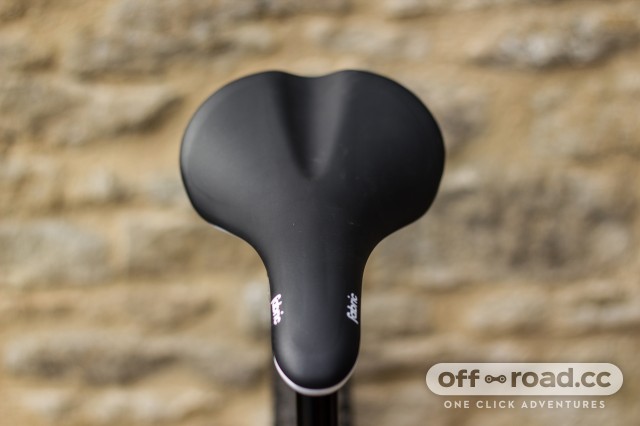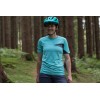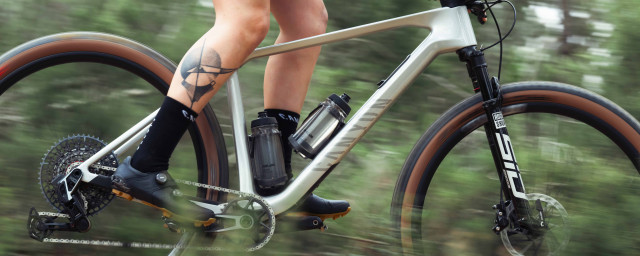Buyer’s guide to mountain bike saddles

It's the place you'll spend the most of your time when mountain biking, so getting yourself a comfortable saddle is one of the most important things you can do to give yourself an easy life when riding. Our buyer's guide gives you the low-down on saddle choice - whatever your shape, size or sex - and will hopefully lead you to the right life-changing (or at least saddle changing) decisions.
- Buyer's guide to mountain bikes - get the best MTB for you
- The best gravel and adventure bikes you can buy for under £1,000
- The best mountain bikes you can buy for under £1,500 - full sus and hardtails
Get this right and you will spin along without a care in the world. Get the choice wrong and you will be entering a whole world of pain and discomfort.
First off, there is no automatic right answer. What one person swears by will more than likely put you in some kind of cycling hell. People come in all shapes and sizes and your search for a saddle is probably going to contain a bit of trial and error. No matter, we are here to give you to tools and the pointers to hopefully make that process a little bit smoother.
Where should I start?
We figured the best place to start when thinking about buying a new saddle is to have a long and hard think about what is wrong with your current saddle? Where does it hurt, what does it rub, where is the pressure and importantly, how are these factors hindering your riding. Then it is just a case of finding a saddle to try which combats these problems or at least some of them.
What type of saddle do I need?
This all depends on what sort of riding you normally do and the position you find yourself riding in. We are going to be focusing on mountain bike saddles here but there are still differences in ‘types’ within this category. If you are a cross country race whippet you might be better off with something with a shallow profile and minimalist padding, those looking to spend longer in the saddle you will more than likely look for something with a cut out down the middle to relieve pressure. Or for those looking to cruise, you’ll be happier on something with more padding, remember though, more padding doesn’t necessarily mean more comfort!
Covering
That brings us nicely onto the components of a saddle, we'll start from the top down beginning at the outer covering. It's maybe not a part of the saddle which will contribute a major factor to your comfort or discomfort but it is something that will need to be considered in terms of longevity and durability. If rolling about in the mud at the weekend like a pig in the proverbial poo is your thing, then steer clear of a leather topped affair and go for something synthetic and harder wearing. It’s a disappointment when you find the perfect saddle but the integrity of the cover lets you down long before the saddle life is out.
Padding
As we said above more padding doesn’t mean that you will be comfier, in fact quite the opposite, increased padding may well mean more rubbing and chafing. The padding on a mountain bike saddle is predominantly there to disperse weight across the surface of the saddle. polyurethane and ethylene-vinyl acetate are common fillings for mountain bike saddles due to high load bearing capacities, flexibility and shock absorption properties. Although the temptation might be to go for a saddle which looks super plush, akin to an armchair, the route to saddle comfort follows the ‘less is more’ route. Fewer contact points mean fewer parts to cause discomfort, that is as long at those parts contacting the saddle are happy!
off.road.cc on WhatsApp
All the latest offroad cycling news, tech and buying advice straight to your phone.Follow our WhatsApp channel here
Chassis
Something that is often overlooked is the saddle chassis or shell, this is the underside that gives the saddle its shape. It is a part commonly made from plastic or carbon fibre and can make a real difference to the comfort of the rider though its flexibility. Saddles with more flex or give in the shell will be better at absorbing shock and therefore negate the need for excessive padding on top.
Rails
Rails can be composed of a few different materials; steel, titanium or carbon, each coming with different price tags and different properties. Steel railed saddles will often be cheaper and heavier, titanium rails are lighter and more compliant than steel. The same can be said for carbon rails, these can be hollow further diminishing weight and have flex purposefully built into them for comfort.
Shape and Size
The length, width, shape and profile of the saddle is a priority in the quest for mountain bike saddle nirvana. It pays to take notice of this criteria when deciding which saddle to perch on next.
- Length – a longer saddle nose allows the rider to shift their weight about on the bike more, for example sitting on the front of the saddle when climbing to weight the front end and stop it from lifting. Shorter saddles are usually seen towards the ‘leisure’ end of the scale and will be coupled with an upright riding position and more padding.
- Width – Saddles are made in different widths with manufacturers usually making each model of their saddles in a couple of different measurements to cater for different preferences and sit bone widths. The width is measured in millimetres and will vary slightly from manufacturer to manufacturer e.g. 142mm, 143mm, 150mm 155mm etc. Retailers for brands such as Specialized and Pro usually have sit bone measuring devices where you sit on a gel pad and the impression left is measured, indicating which saddle width will be best for you. A saddle too wide for you may cause restricted movement or rubbing and one too narrow may mean discomfort on the sit bones and insufficient support.
- Shape – Cut outs are the other major factor in saddle shape, a well placed cut away will relieve pressure in sensitive areas. This is again a very personal decision and will depend on the position on the cut out in relation to the place where you predominantly place weight and the shape of your ‘bits’.
- Profile – When we say profile we are talking about the shape of the saddle in terms of the shape of the cross section. They will range from super flat, to a shallow convex shape to quite rounded. Again, you’ll need to sit on them all to see what ‘fits’ you best. More ‘race’ type saddles with less padding are usually flatter, sometimes coupled with the middle cut out which extends into the nose of the saddle.
Women Specific
Also worth a mention are women’s specific saddles, purposefully shaped to suit women’s anatomy. Women are known to have wider sit bones and therefore some (not all might we add!) prefer a wider saddle. The cut out on women’s saddle is sometimes wider and deeper to allow more room in sensitive areas. Bike companies seem to also err on the side of more padding for their women’s saddles, that doesn’t mean women need more padding though – experiment and see what suits you best!
The last word....
Don’t get lost in saddle despair, before you start on your journey to saddle harmony, remember the following:
- If it’s right for you, it’s right. I’m female and currently pretty comfy on a unisex Specialized Phenom Expert rather than a saddle from Spesh’s female range.
- Use lube. And be liberal. (we are talking chamois cream here.....)
- Remember the old saying ‘buy cheap, buy twice’. It’s true, saddle comfort is essential to riding happiness – don’t skimp.
- Many bike shops will allow you to hire or demo saddles before taking the plunge, chat to your local shop and see what they offer.



















